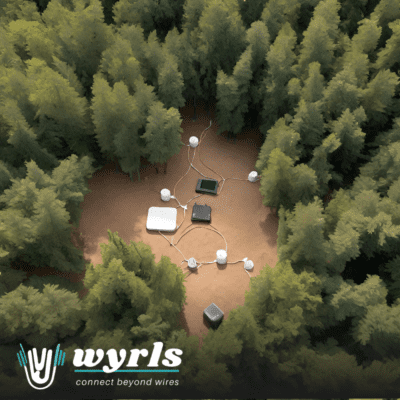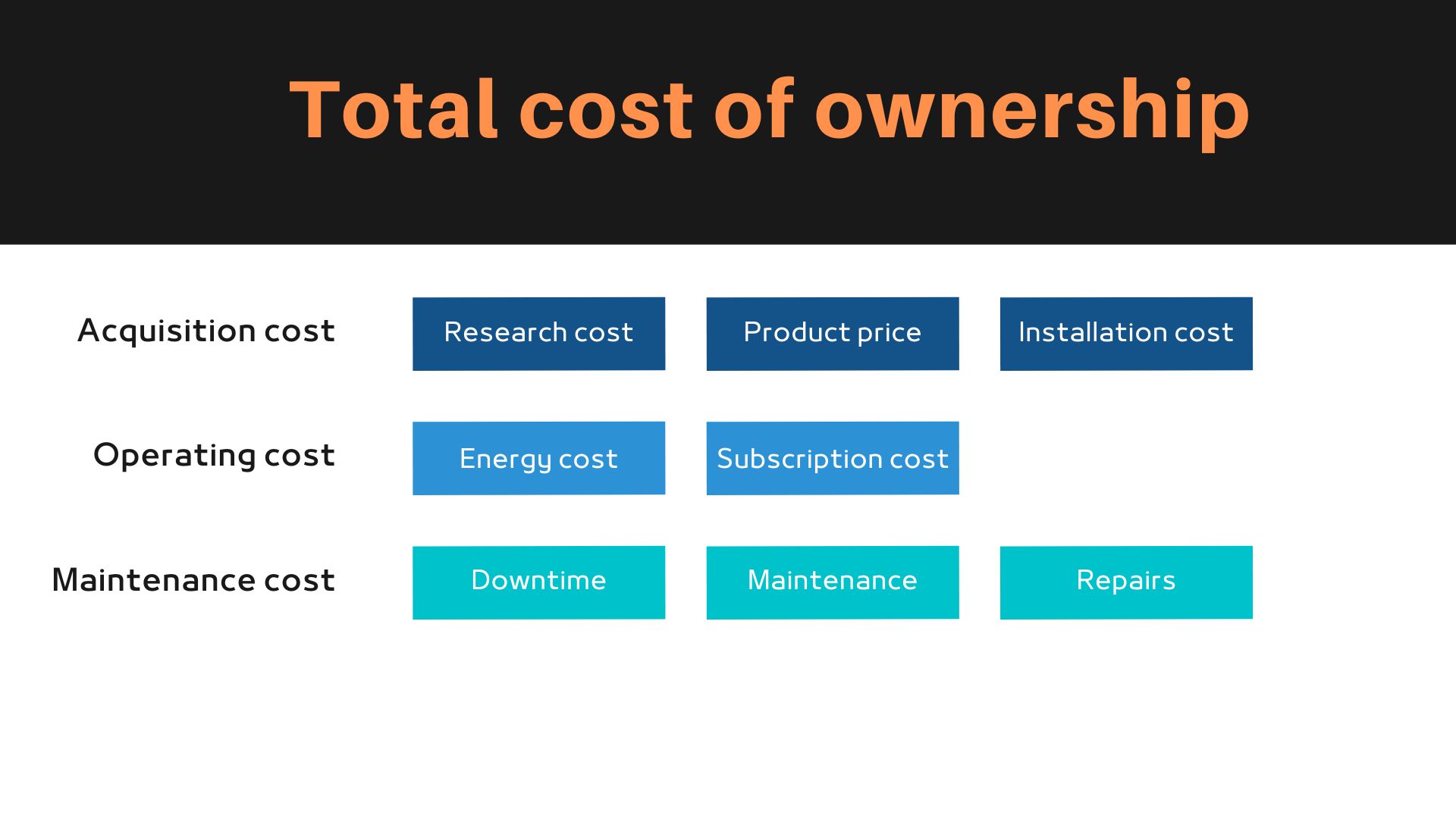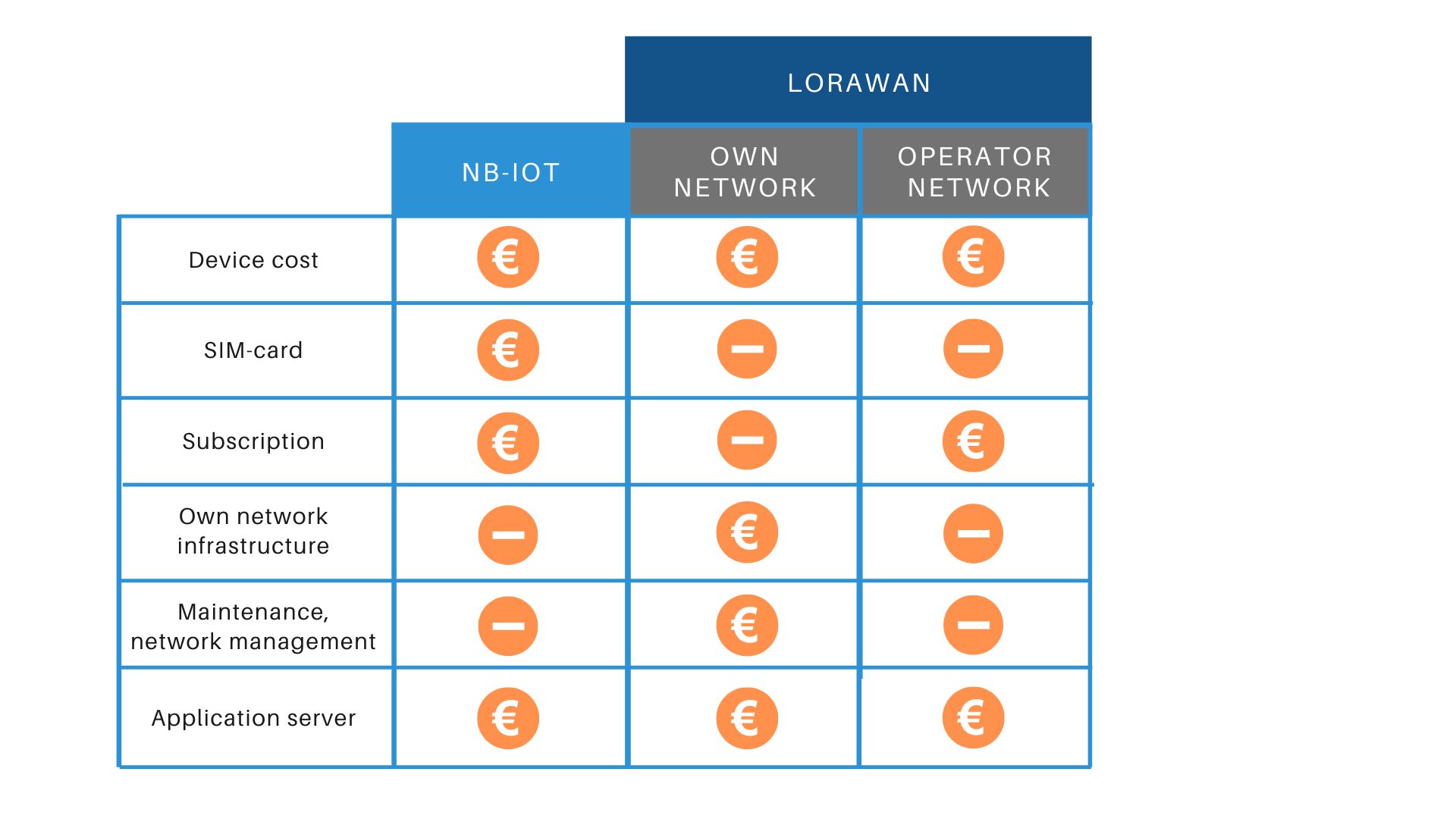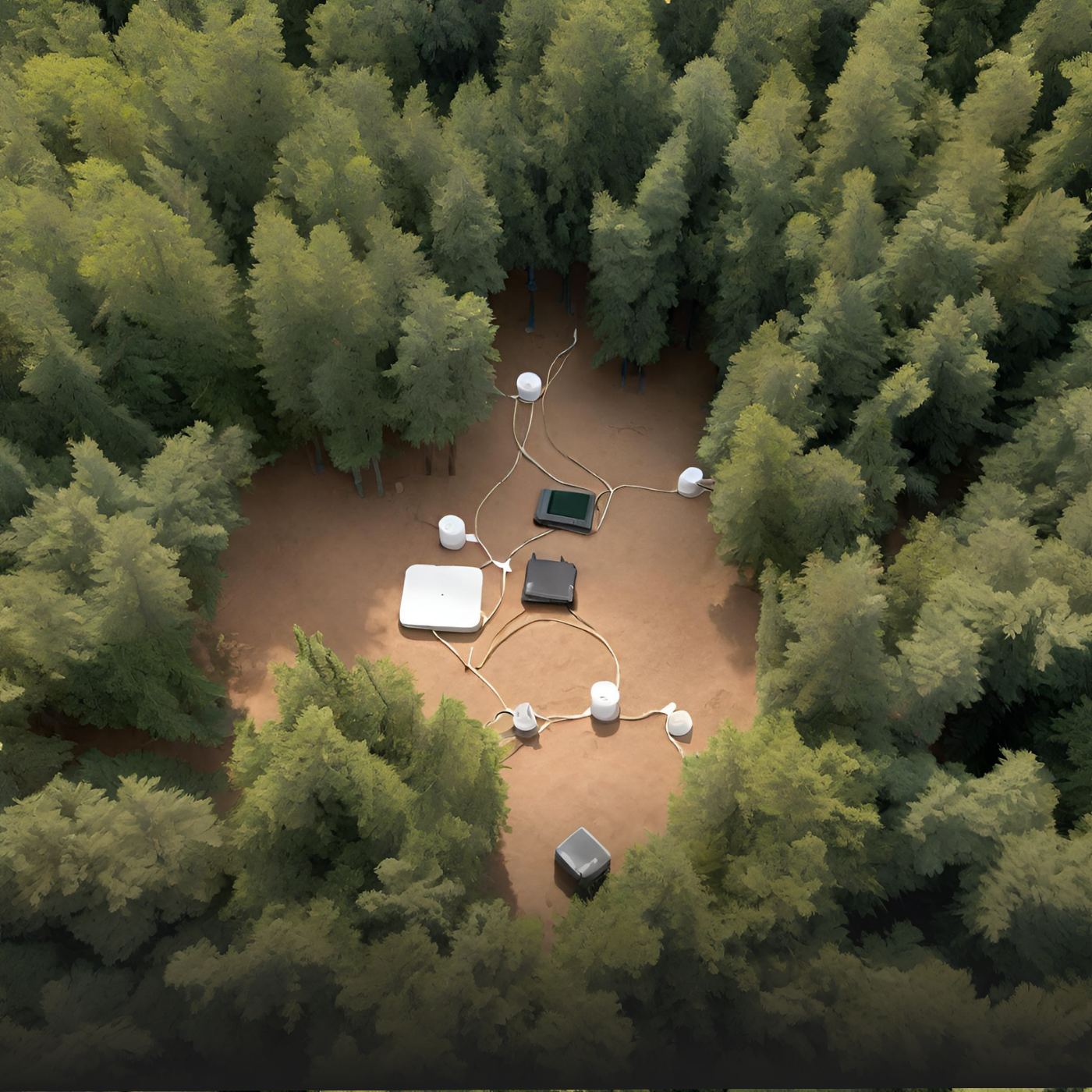 The hidden truth of IoT wireless networks economics. Do you have the right strategy in place? LoRaWAN is free, and using cellular networks costs money, right? It is like Wi-Fi after all; there are no costs involved with LoRaWAN, it is free like air, isn’t it? Not so fast.
The hidden truth of IoT wireless networks economics. Do you have the right strategy in place? LoRaWAN is free, and using cellular networks costs money, right? It is like Wi-Fi after all; there are no costs involved with LoRaWAN, it is free like air, isn’t it? Not so fast.
Let us first look at the general network scenario. There are three categories of IoT networks:
1. Networks installed by an operator.
2. Networks you install and operate yourself.
3. Networks a vendor installs and maintains, which you own and monitor.
LoRaWAN can belong to either of the network types, whereas cellular can as well, but typically for cellular LPWAN, you go with the operator or have someone build a private network for you. (This is a rewrite of this blogpost) that was a part of my LoRaWAN vs 5G blog post seriese
The costs of IoT connectivity (and the surprising facts)
The vendor-based mobile networks, a.k.a. the private networks, are not open to other users, but users on that network can also roam the public networks; at least that is the idea. For LoRaWAN, there are “private networks” or public networks. I put “private” there because, after all, the frequency used is not private. Some cities or communities offer public LoRaWAN networks at a low cost, but a private network should be used for better integrity in more demanding applications. Some companies, organizations, and so on, build their own LoRaWAN networks. So there are a lot of flavors available. Bottom line, some networks do not come with a subscription for LoRaWAN, and some come with a subscription. But the ones without are not free per se. Let us move on to the next section, TCO, the total cost of ownership.
The total cost of ownership:
We can look at the total cost of ownership from two perspectives. One is just using an existing network; the other one is to build your network all by yourself. An IoT network’s cost structure depends on whether you subscribe to a network operator or deploy and operate your network infrastructure.

Building your own network:
Ok, so let us assume you want to build a nationwide network. I get it; you don’t just wake up one morning thinking that is your accomplishment for the day, but anyways. Assume that is what you would want to do. This is a truly demanding task. A typical network lifecycle consists of planning, rollout, operation, and maintenance phases. Setting up your own LoRaWAN network may eliminate user fees. But again, it is not free. It will require investment in planning, infrastructure, purchasing and installing local gateways and network servers. After that, you will have the cost of maintenance and operation, possible site rentals, and electricity. Alternatively, all of these costs. As you understand, all these aspects are included in the usage fees, i.e., the fees charged by networks run by an operator. It is an enormous scope to build a network; I will not even try to describe all aspects of building your network in this post, but the undertaking is massive.

One of the best comparisons between the different networks from a cost perspective was put together by Mohammad Istiak Hossain and Jan I. Markendahl of the KTH Royal Institute of Technology, School of Electrical Engineering and Computer Science (yes, I trust a Swedish source, of course). In their report, they compare all aspects of building a network based on LoRaWAN or based on the 5G technologies. Four cost drivers of LPWAN deployments are costs for the site, cost of electricity, management of the network, and installation cost.
To summarize the results, LoRaWAN is the most cost-effective for low-density scenarios. This is natural. The required number of gateways to meet the service level required is low. But NB-IoT is just a few per cent more expensive. In the high device density urban areas, 5G is more cost-efficient. And from another perspective, in the report, the authors also point out, “LoRaWAN cannot provide a service guarantee, limiting the CSP’s service provisioning range in IoT service offerings”.
If this is important to you, you must understand that installing a network is not a fire-and-forget type of thing. You need to allocate enough resources and invest in continuous enhancements and updates for the coming years, ten years at least. It would be best if you also had a strategy for regular updates, a plan for improving quality and performance, and dealing with security matters.
Few organizations are ready to build networks of that category.

Using an operator
If you are not really into planning, rollout, operation, and maintenance, and there are no other regulations that force you to run your network, there is an option for you. Using a network run by an operator, all these costs are included in the usage fees charged. The thing here is that calculating your cost is much easier, and it is much easier to plan the cost per device, per month, and the total cost of ownership.
So what is the total cost of ownership then? I think the best calculation would be
Total Cost of Ownership = Acquisition cost + Operating cost + Maintenance cost – Salvage value
And what is better than a diagram to show some examples of the various costs?

Let us do an estimation:

Using LoRaWAN, you have a more negligible acquisition cost than the current LTE-M or NB-IoT devices. I looked at an outdoor temperature sensor; I could find LoRaWAN sensors for €100 and NB-IoT sensors for €140 when I did a quick googling. So the difference is €40 in favor of LoRaWAN. Looking at the energy cost, well, they are pretty similar. So it all boils down to the subscription. I have no clue what a LoRaWAN device costs per month, but I know that NB-IoT devices are in the ballpark of a Euro and up for a managed IoT-service, using a SIM from 1NCE, for example, is even cheaper.

But let us, for a moment, play with the 80-cent price for LoRaWAN. Then the saving is €2.4 per year. So the overall cost saving for a LoRaWAN device for ten years could be €64 in this example. Of course, with many devices deployed, it is a difference. In Sweden, we have high labor costs, so here €64 equals the price of 30 minutes for an engineer. If you favor licensed spectrum, if you think cellular provides better security mechanisms, and that €64 is not that much of a premium, then go for cellular.
When choosing an operator, it is clear that you must select an operator that operates the network and be in business for the entire lifespan of the product. Will the prices for the subscriptions decline, or will they grow? Usually, with large operators, they decline over time.
Build your network:
In facility management using LoRaWAN is popular. I get it. You install a set of gateways, you install your sensors, and you are ready to go. But, let us pause a minute. A gateway will cost in the ballpark of €500 + installation. You will still need a SIM-card or fiber to have it installed. Let us calculate a cost of network connectivity in the ballpark of €30 per month. So the 100 flats that you are about to monitor will have to share the extra cost of installation of building a wireless network for about €1000, or equally €10 per device. Funny enough, that is the price of a 1NCE SIM-card that will provide wireless connectivity on a controlled spectrum, with some network monitoring, for 5 years with enough prepaid Megabytes to send roughly 2,000,000 payloads.
I get that you may feel that paying an operator is expensive, but in the example above, we have not even calculated the cost of running the base-station and all the other aspects of actually operating a wireless network.

